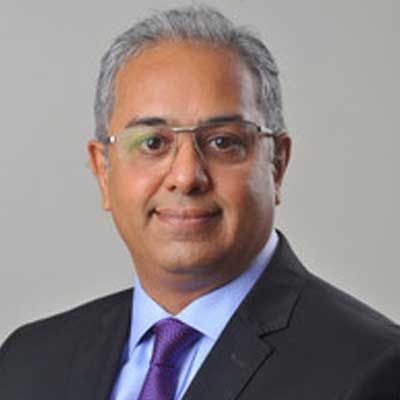We will be acquiring more land banks to increase our commercial footprint
01 Apr 2020

Creating value and assets in the real estate and infrastructure
sphere is the business mantra of Tata Realty and Infrastructure (TRIL), a subsidiary of Tata Sons. Having delivered over 53 projects
in more than 19 cities across
the country and with another
15 projects in hand, the firm is on an expansion spree, preparing in excess of over 5-6 million sq ft annually. Sanjay Dutt, Managing Director & CEO, TRIL, shares more on the firm’s plans, in conversation with SERAPHINA D’SOUZA.
Tell us about the company’s
total developed area across its completed projects. What are your expansion plans?
Our combined total developed area across completed projects stands at 32.9 million sq ft (TRIL – 14.6 million sq ft + Tata Housing – 18.3 million sq ft). These include
53 projects in over 19 cities.
We have about 15 ongoing projects, which include several phases from existing projects and other new developments that will come up by the end of the year. We have two residential developments coming up by the end of this fiscal; we have
1 million sq ft of existing SEZ being built, which will be ready for occupancy in June; and another
1 million sq ft that will come up in Gurugram by next February-March. Our launches planned in the next two years include the 3.40-sq-ft Intellion Park in Gurugram, the 7.20-sq-ft Intellion Park in Mumbai, and the 0.80-million-sq-ft Intellion Edge in Sector 2, Gurugram. So simply the fact that we are preparing in excess of over 5-6 million sq ft annually to scale effective 2021 onwards is itself a huge opportunity for support industries, in terms of materials, technologies, equipment or any other.
Tell us about advanced construction technologies or materials that you use.
We have used 3D building in housing. We have also done precast, in which time is actually a benefit. However, at some places it does not make sense because the sales velocity and cost dynamics are not supportive. Going forward, we are open to adopting newer technologies as long as the actual quality is not compromised.
What model or concept do you follow for projects across segments?
Different companies follow different methodologies. We are evaluating multiple models.
For example, for commercial, it could be the Design and Build approach as it is easy to standardise buildings in commercial, which we have done to a large extent. In residential, it is segment-specific; so affordable homes are different from premier and luxury. Every location will have a different look and feel. Our offerings include affordable, premium and luxury. Having said that, our short-term focus would be commercial because we already have a large portfolio of residential and we need to compliment this in scale with commercial. We will also be acquiring more land banks to increase our commercial footprint.
In a recent move, the firm sold two of its malls to Virtuous Retail....
Yes, TRIL sold two of its malls to Xander-backed Virtuous Group.
This is in line with our business strategy to expand our commercial portfolio across key markets and exit Tier-II and Tier-III cities.
How do you strategise to raise funds for your projects?
TRIL has several ongoing
projects in the residential and commercial segment. On the commercial side, we put in our
own equity for upcoming projects and borrow construction finance. After construction, we move to leasing. When you have completed a substantial amount of leasing,
most developers move the construction finance loan to lease rent discounting with the bank.
We do have real estate funds which are investing with us.
What are the key factors considered by a fund management company before investing in a firm or project?
Investors prefer to see credible developers with a successful track record. Business strategy alignment, professional management and talent backed by robust process and institutional set up with transparency and high governance is always the key. The leadership of the organisation, industry knowledge experience and repute are given equal significance.
How do you ensure the desired
RoI in your projects?
Financial discipline; detailed planning at the initial stage; and clear strategies on execution. Success strictly depends on the clarity of the product; therefore,
the right design brief and an optimised product. In the end,
the timeline is the biggest disrupter of RoI. The Design and Build
model has done well for many.
If you have the scale, you can
also do procurement or bulk purchase strategy, which can help monitor your cost in a disciplined manner. If you develop a core
team of project managers who ensure discipline, you have RoI.
The business plan should be conservative, should be able to absorb market and development and market-related risks.
How has the company’s financial performance been and what are your future plans?
Our commercial is a nearly
100-per-cent lease portfolio. Compared to 2018, we witnessed a 60-per-cent growth in FY2019.
In terms of square feet, in the commercial space, we have already added 800,000 sq ft this year, and it is nearly 100 per cent leased. Looking at the combined portfolio of residential and commercial going forward at any given time, we will have 5 million sq ft or more under construction. We are hoping to see a lot of traction in the B2B markets – office, retail, warehousing, logistics, co-living, co-working, the affordable housing market along with the rest of the residential segment. We are also hoping that the last-mile funding of some developers because of the liquidity situation and NBFCs will improve and give confidence to the market.
To share your views, write in at feedback@ConstructionWorld.in
Related Stories

